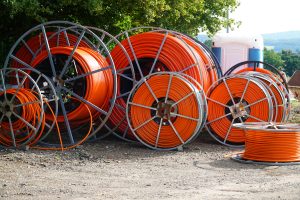Relativity Networks has raised $4.6 million in pre-seed funding for development of its patent-pending hollow-core fiber technology, which transmits data nearly 50 percent faster and farther than conventional solid-core fiber.
The hollow-core fiber product enables data to travel 1.5 times farther without impacting the latency that can throw intricate multi-location data operations and applications out of sync. As a result, data centers can be deployed farther apart, according to Relativity Networks.
“While traditional fiber optic cables typically limit data centers to within 37 miles of each other due to latency constraints, Relativity Networks’ HCF technology extends this range to 56 miles,” the company said. “This increased geographic flexibility allows organizations to strategically position their data centers closer to existing and emerging power sources.”
The HCF cable is already being used to expand the number of data centers for cloud-computing hyperscalers. The company has already secured multimillion dollar contracts and has deployed its technology in several U.S. field installations.
Jason Eichenholz, Relativity Networks’ Founder and CEO, has a vision for the new AI economy with greater options for geographic locations for data centers. This means they can be built closer to already-existing power sources.
“By moving data faster with lower latency at nearly the speed of light, we are providing the industry new geographic optionality to address the energy-intensive data needs of today’s AI-driven digital economy,” Eichenholz said. “Currently, new data centers can’t be built fast enough to satisfy the rapidly expanding AI-driven economy, and the lack of available power is an existential threat to fueling that growth.”
Relativity Networks, which Eichenholz founded in 2023, is commercializing HCF technology originally developed by co-founder Professor Rodrigo Amezcua at CREOL, the College of Optics and Photonics at the University of Central Florida.
Relativity Networks’ pre-seed funding was raised by a group of private investors following the initial investment from Eichenholz.



